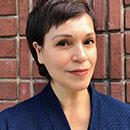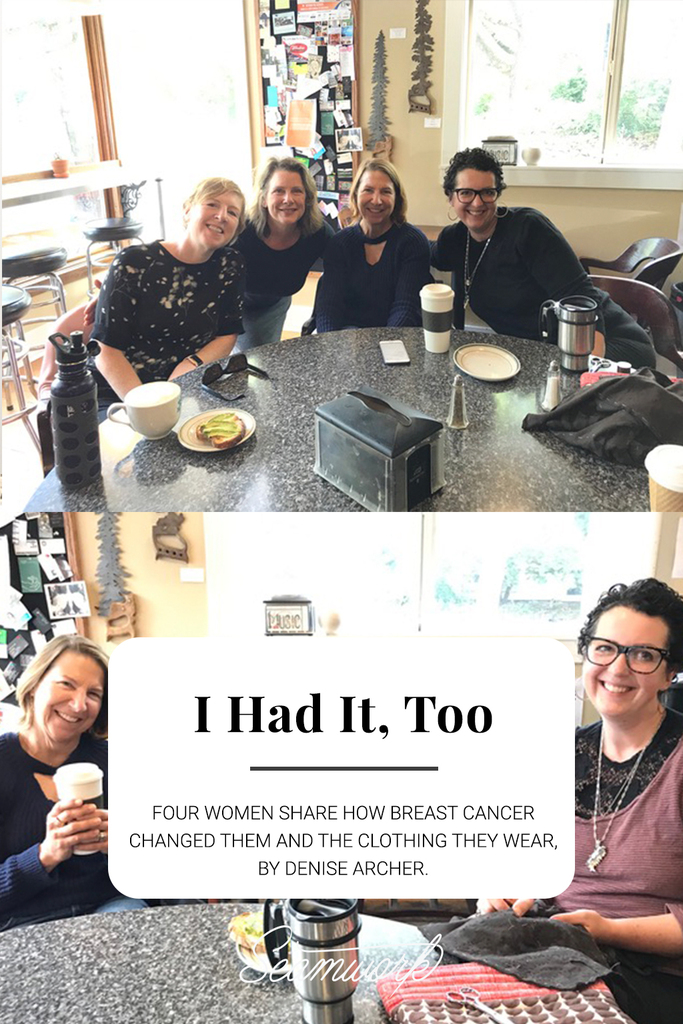After I was diagnosed, they arrived one-by-one: several by email, one through a card, most via text. “I had it, too,” they said.
Women I didn’t know, and also women I knew, but I had failed to grasp that they carried an unspoken history. Their stories poured out, their support was soft, gentle, unwavering. And there was grief.
Then after I had completed my treatment and initial surgeries, texts, and emails arrived from friends who learned of others diagnosed. They were raw with fear and in need. Now I was the one who reached out, held a hand, whispered words of encouragement, stroked hair that would soon be gone.
We were the outliers, the ones too young to have it, yet we did. We formed a support group but called it “having coffee.” There were a few old-timers who understood this was just the beginning, that our future would be filled with far more unrest than statistical outcomes and longevity. But the rest of us behaved like kittens back then—licking each others’ wounds, purring into one another’s ears, exceptionally naive. Then the first of us had her cancer return: Stage 4, dying. We grew up quickly.
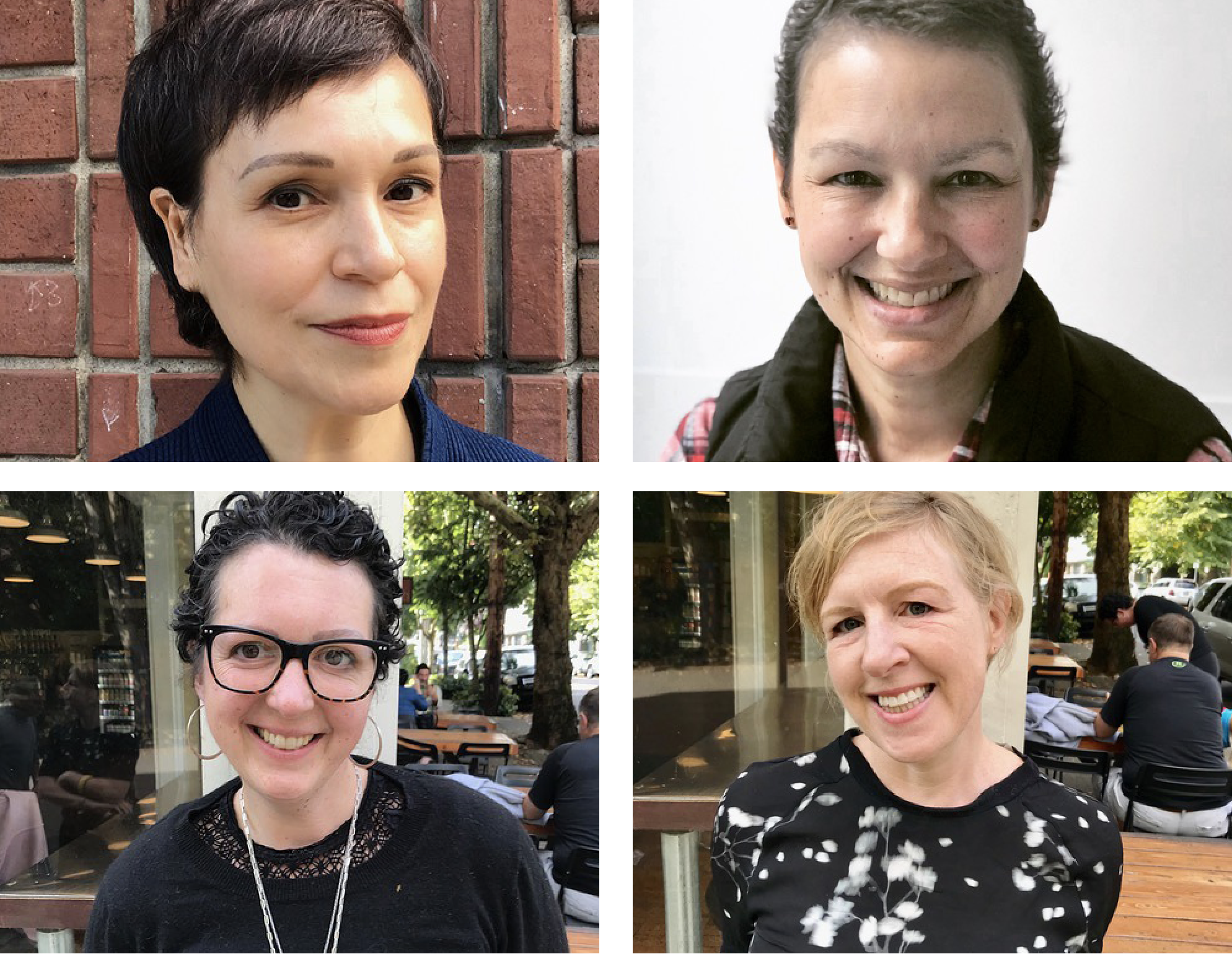
We continue to meet the last Wednesday of every month at the same place. We discuss daily life and more. There are surgeries, still. Some of us are on a lifetime regimen of medications. Every single one of us has made a different choice about her breasts. But there’s one thing we all have in common: we have been forced into menopause.
Menopause brings with it a certain clarity, honesty, and freedom. When we sit around the table with our coffee, there’s a noticeable absence of niceties. We don’t have time for emotional massage, for rounding out sharp edges (that is unless someone’s just been diagnosed). For us, we prefer to be ragged granite. When I was younger, I felt intimidated by elderly women with shrewd gazes, and pithy replies. They were so sure of themselves. “Ha!” I laugh. We have become those women.
Also, our bodies have dramatically changed. Combined with menopause is the assault of all those surgeries, the chemotherapy and radiation treatments, the bottles of medications. We cannot remember what it was like to be so carefree, so certain of our body’s aging trajectory even with its unlikable parts. Some of us look at ourselves in the mirror, mystified. WHO is this? I encourage the ones interested to pick up sewing, take back what was stripped away.
Some of us lift up our shirts to show our most recent procedures and scars. We don’t care who else is looking. There are vertical and transverse cuts, and they heal differently. “Dog ears” are considered a rookie job. Skin can tether and dimple. Sewing clothes isn’t that different from sewing bodies, after all. I find it fascinating. And I continue to nudge my friends to sew for themselves.
With that, I introduce you to a few of my friends who share their stories of how fitting into ready-to-wear garments has significantly changed after breast cancer. Their stories are honest and direct. Their breast choices are unapologetic. And their bodies are still in upheaval.
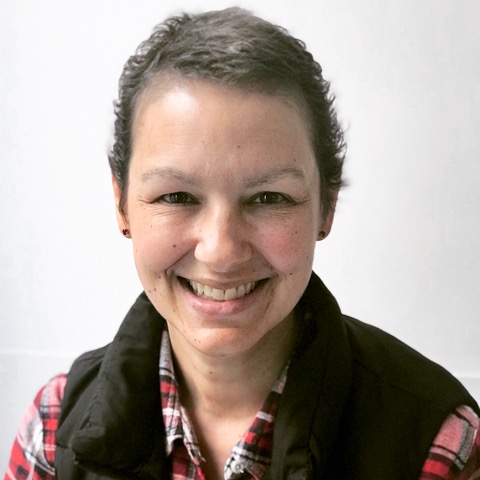
Skye
I had breast cancer when I was 41 years old. I had a bi-lateral mastectomy and chose to go flat, and I love it. However, I’m not truly flat. I’m concave.
It’s really difficult to find clothes that fit a woman’s concave chest. Most women’s shirts have princess seams, and I can’t wear those because I don’t have breasts—even wrap shirts have princess seams. Regular v-necks show my scar tissue and my port. I want to feel like I look good, not like a patient. Button-up shirts rub against my sensitive scars. High gathers and bows make me feel like I’m wearing a little girl’s clothes. I don’t want to camouflage my flat chest, but I’m not looking to accentuate it either.
I really don’t want to be a billboard for breast cancer. I find that knits are easiest because they drape and don’t gather in the middle where my scars are. I don’t want to wear a plain cotton t-shirt every day, but it’s my uniform.
I spend hours and hours and HOURS shopping for shirts to buy. If I want to go out to dinner with my husband or to an event, I don’t want to wear the plain cotton t-shirt uniform. When I find a top that fits, I buy one in every color because it took me so long to get to that top. It’s such a frustrating experience!
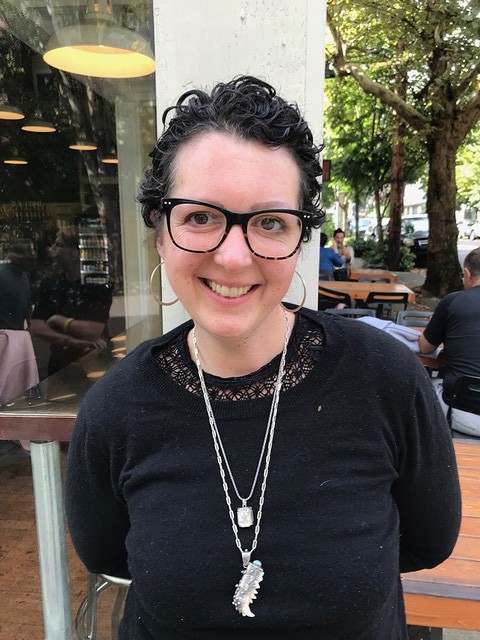
Emily
I had breast cancer at 40 years old and had a bi-lateral mastectomy with reconstruction a year ago. Something I didn’t expect was how much my body changed in ways other than my breasts. The chemical menopause treatment altered the distribution of my body weight. I’d always had a flat belly, but now all my weight gain is in my middle. Also, reconstructed silicone breasts hold their shape more than a natural breast. While my real breasts smooshed down in my previous garments, my fake boobs take up more space because there’s no natural movement. In addition, I gained 40 pounds from hormone therapy, antidepressants, and menopause. While these body changes happen to all women, it happens to breast cancer survivors in a really condensed amount of time.
I’m learning to dress for a new body, and it’s been more challenging than I expected. None of my clothes fit the same way that they did before. So now I’m thinking of making my own garments. I’m interested in sewing with knits and making leisure-style clothing that is more forgiving. They’ll adapt to the changes that are still going on with my body.
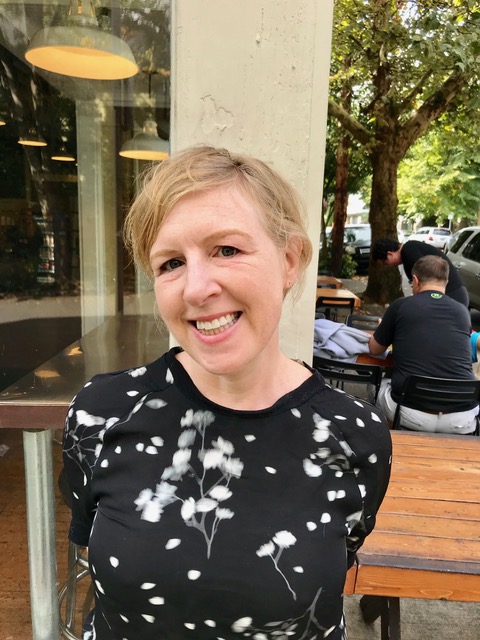
Becca
I was diagnosed with breast cancer at 42 years old. I had a lumpectomy and a reduction on the healthy breast to even myself out. It changed how my clothes fit. But then I required a mastectomy because the doctors discovered that there were little bits of cancer everywhere in my breast. So I had a single mastectomy with an expander put in. It was really hard for clothes to fit because the expanded breast was a completely different size and higher than my reduced natural breast. Finally after a year and a half of research and waiting, I had a bi-lateral mastectomy with autologous (body tissue) reconstruction. My stomach tissue was used to reconstruct my breasts.
With your body, you get used to a certain silhouette. For me, it was my waist gently sloping down to my hips. Now I have a very narrow, straight waist with large hips. I have back fat but a stomach as flat as a table. Even my belly button has been reconstructed. It’s fake. I also had radiation, and my radiated tissue does not gain or lose weight. Those cells are frozen in time.
It’s been a long process for me, so my understanding of my proportions is completely skewed. I don’t know what styles feel good on me anymore. I have a sewing machine, and I would love to sew to be able to fit clothes to my body. It’s such a different body. It makes you reevaluate everything, including something as basic as clothing fit.
Sewing my own clothes is the one thing I can control, the one thing over which I have supreme authority. In my sewing room, I am the ultimate power.
In our group, one of us has died and three more are dying. Death is a slow process for us. It can last anywhere from one to five years—more if you’re lucky. Life wasn’t supposed to be like this. As for myself, I’m still unable to rein my teetering body onto its new path. For three and a half years sewing garments has revolved around my cancer; through the port installation, hysterectomy and oophorectomy, bilateral mastectomy, expanders and fills, liposuction and fat grafts, hernia repair, implant exchange, and scar tape. What I thought was an initial celebration of my final surgery has turned into “just one more.” It will be over soon, I know it. But for now, I roll my eyes and reach for the knits and forgiving shapes. Body size and comfort are elusive. Sewing my own clothes is the one thing I can control, the one thing over which I have supreme authority. In my sewing room, I am the ultimate power.
Just like a goddess.
